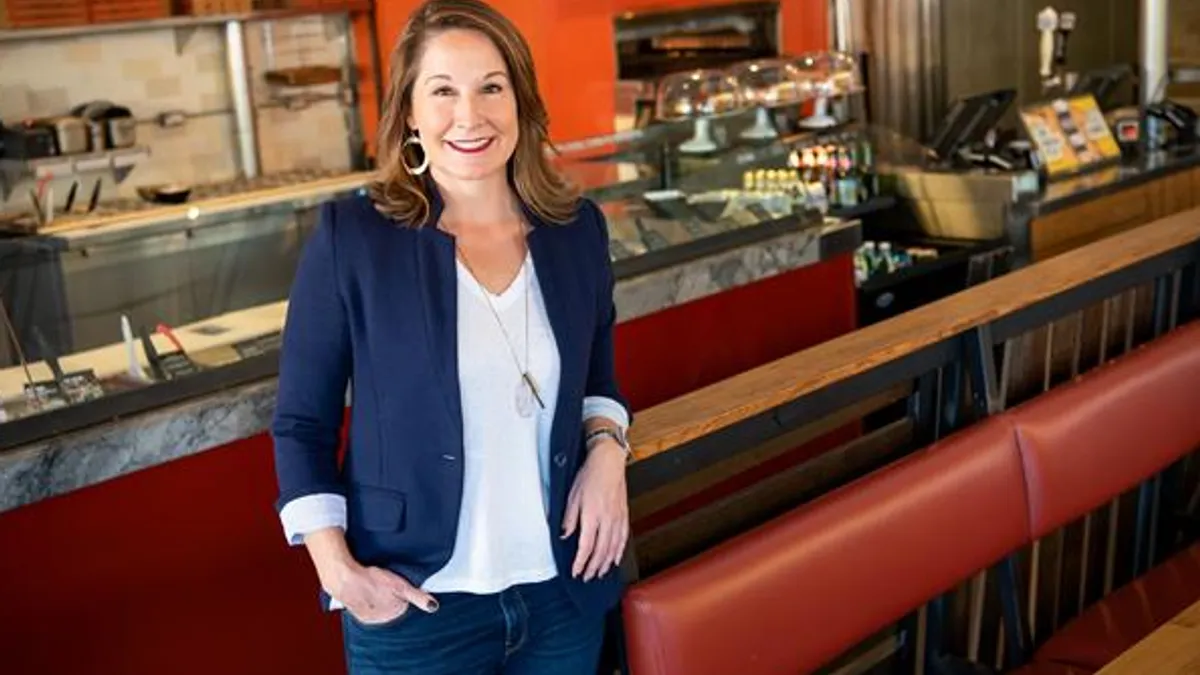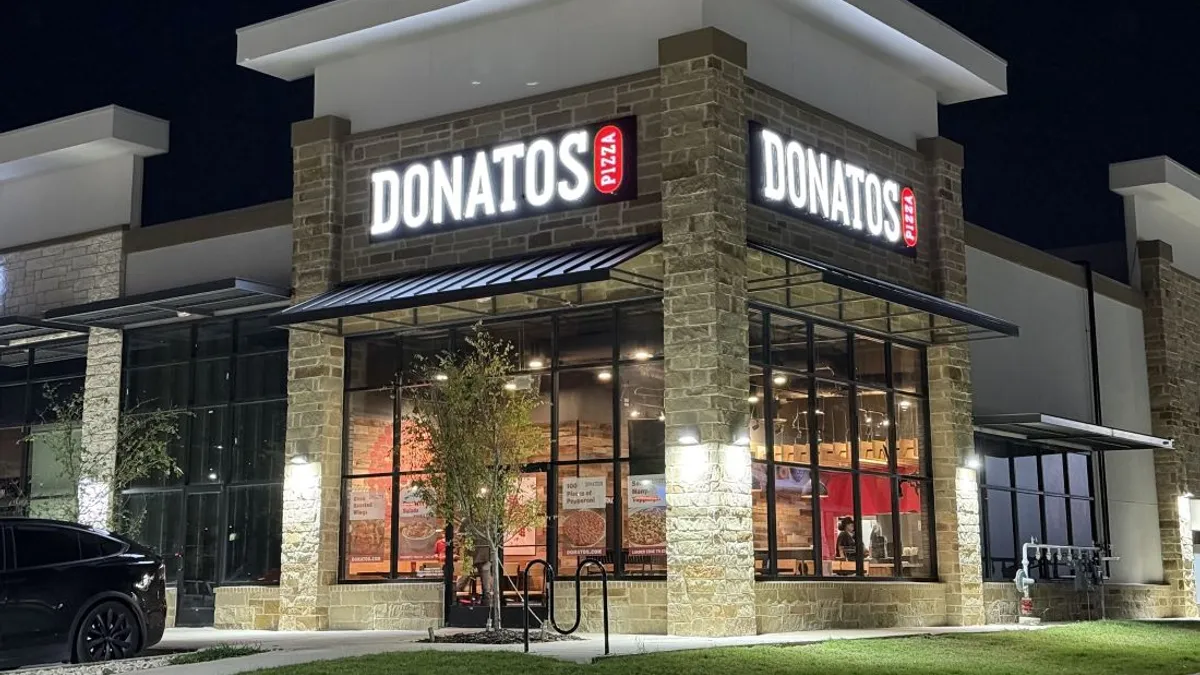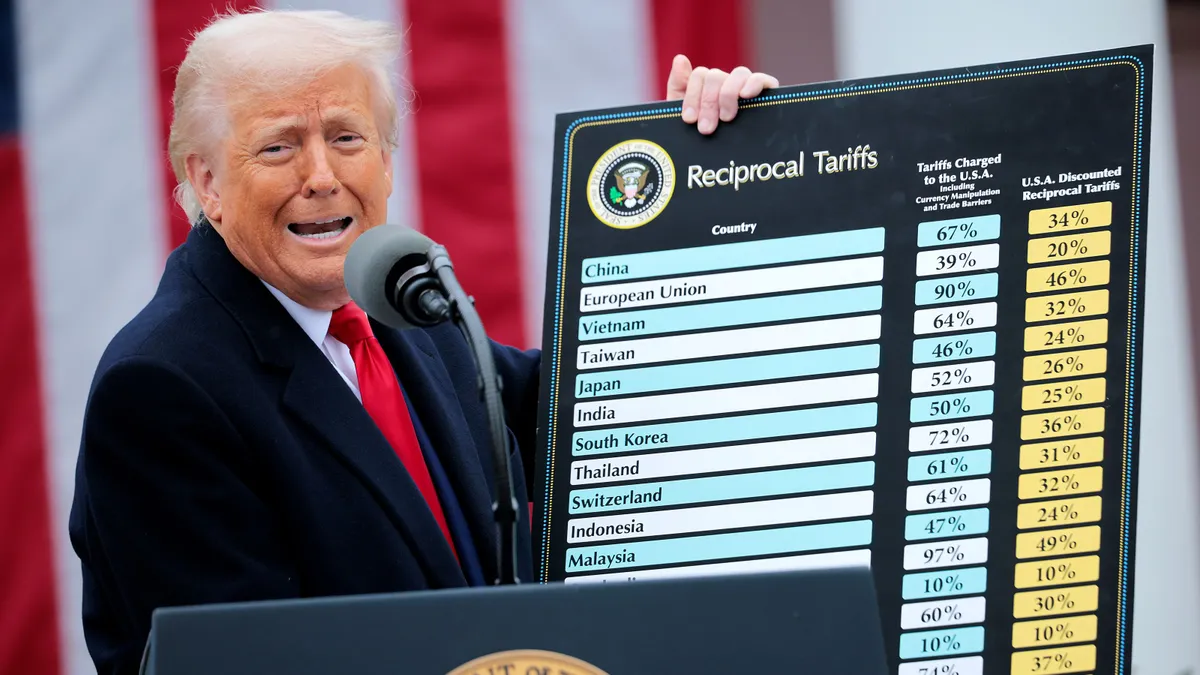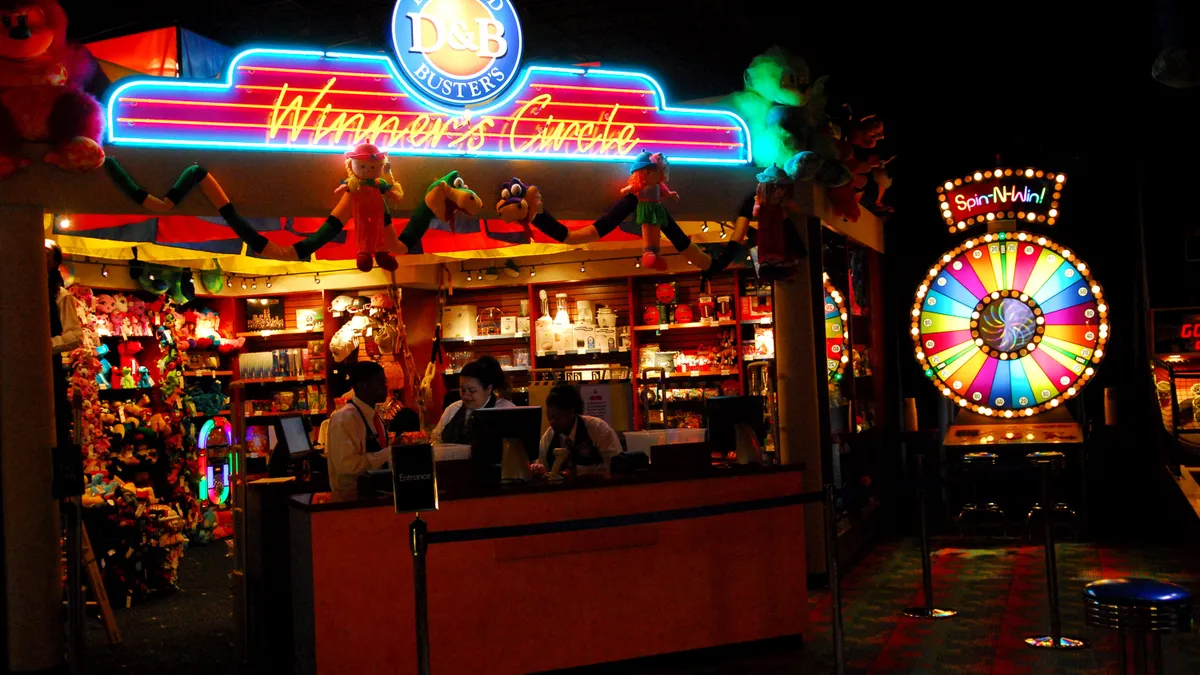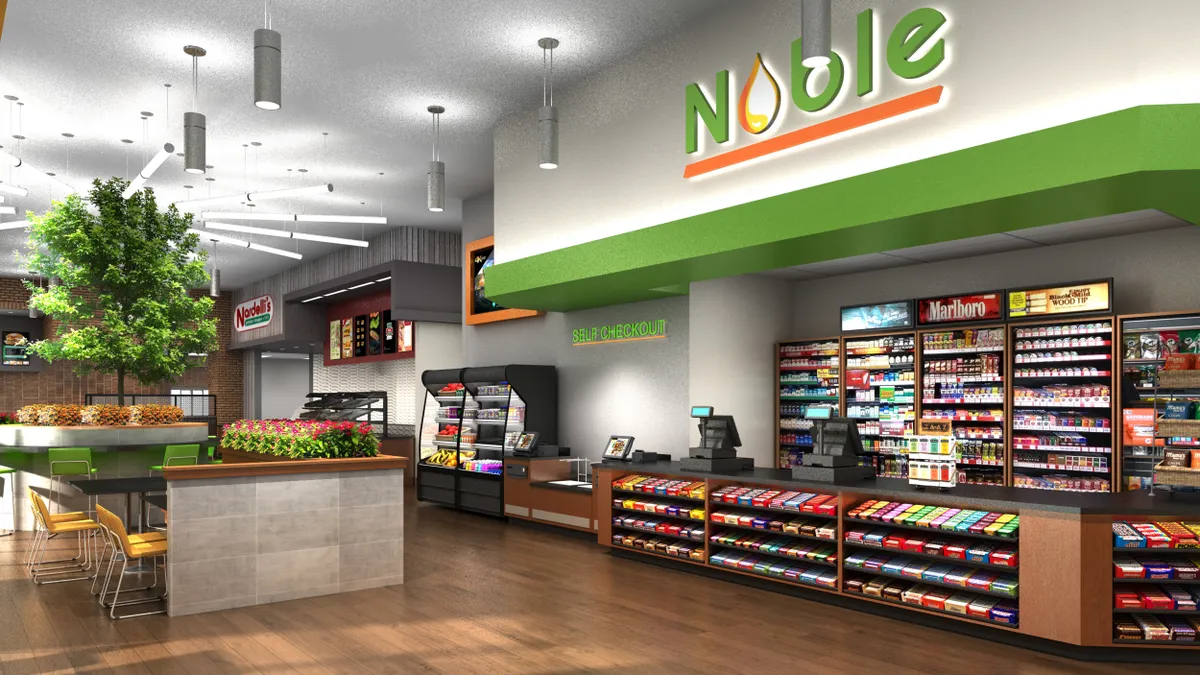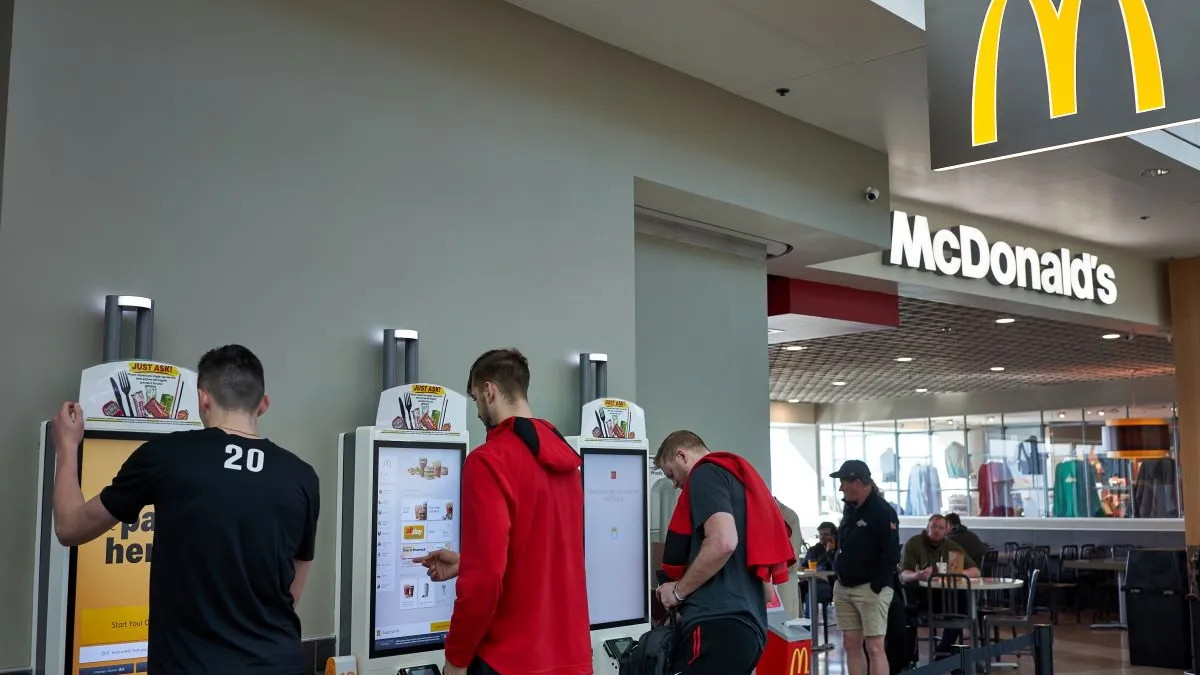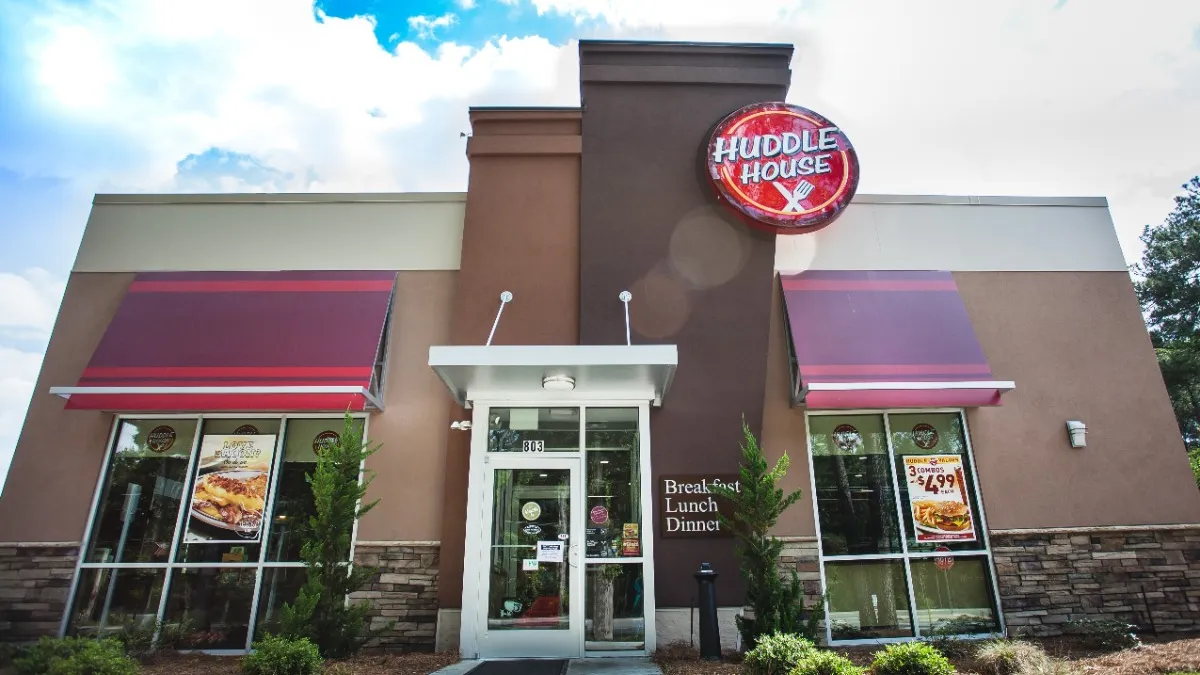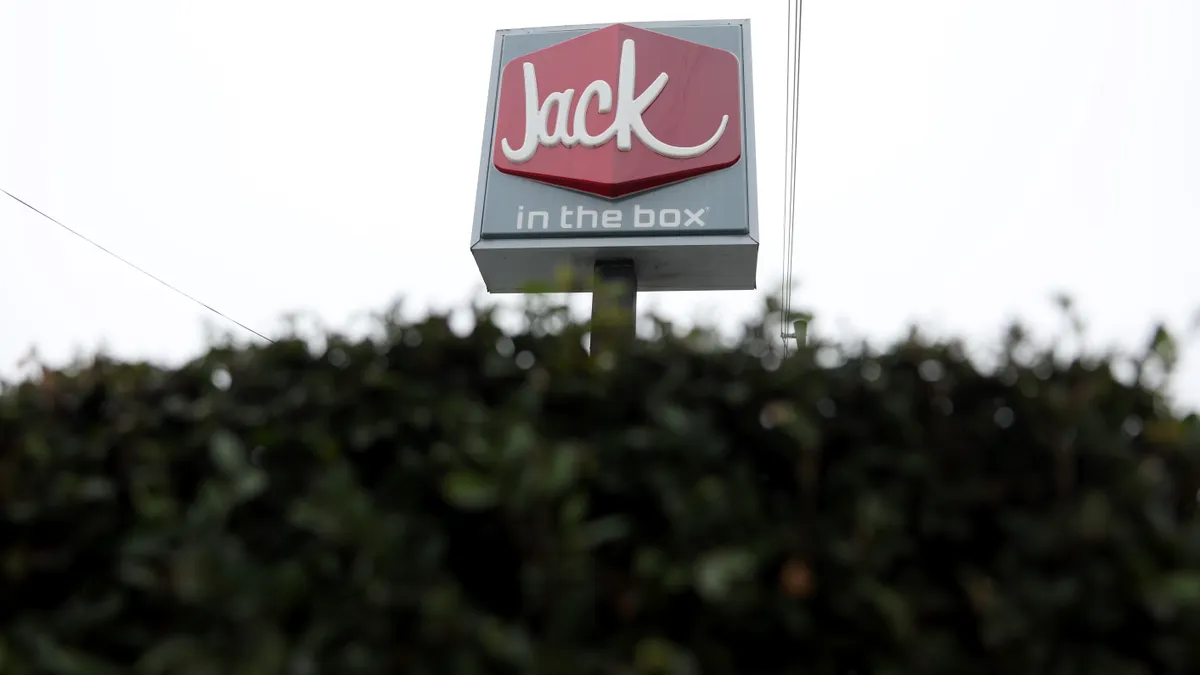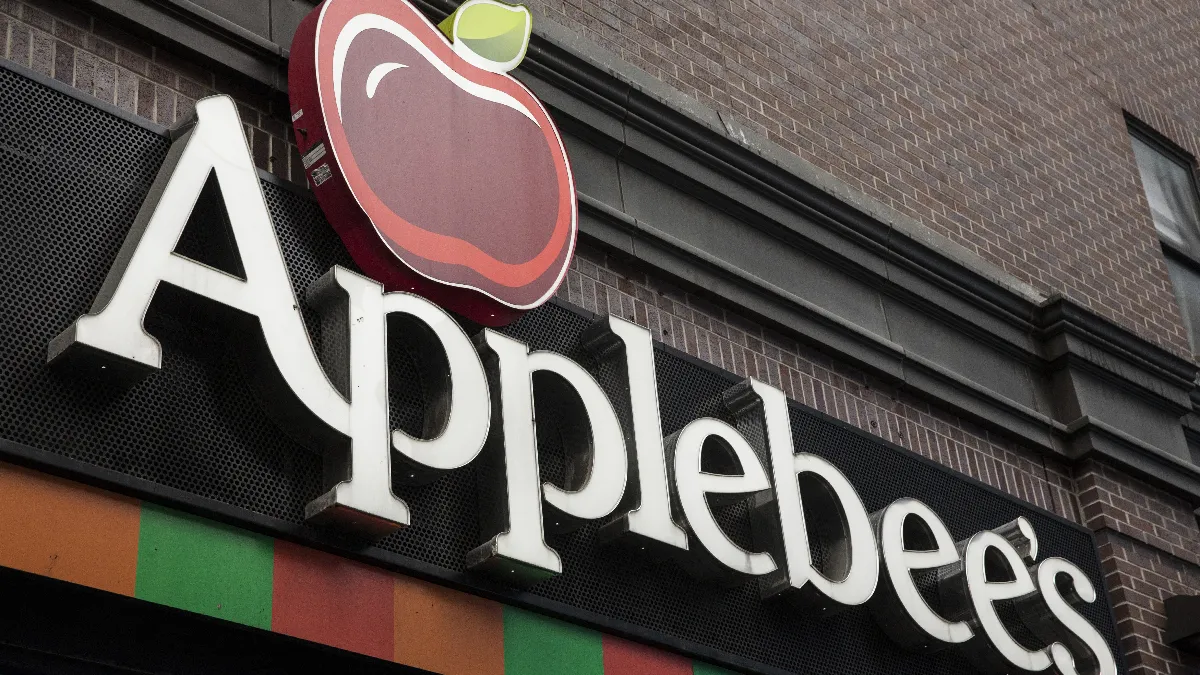It's not easy to break into a restaurant category as crowded and mature as pizza, but Blaze has already sliced itself a hefty piece of market share. The top-your-own pizza chain's system sales rose 23% last year, and it's expanded to 41 states and six countries since its launch in 2012.
The fast casual brand's keen focus on digital innovation and off-premise optimization have made it a formidable opponent for both traditional pizza restaurants like Domino's and fast casual competitors. Now, with newly minted CEO Mandy Shaw at the helm, the company is poised to continue its rapid growth by further positioning itself as a lifestyle brand and investing in technology, like drive-thru lanes, that differentiate it from the standard pizza experience.
"The restaurant business handbook on how to be successful has been written many times over. It's just whether you have the fortitude to make sure you're doing it the right way," Shaw told Restaurant Dive. "If you have the guests at the center of everything you do, and you put the right people in the right places and lean into your business and what you're good at and where it resonates with the guests, you win. And that's what Blaze is."
Shaw expects the brand to operate more than 340 restaurants by the end of the year. Restaurant Dive also spoke with Shaw about how she balances competitive brand developments with franchisee concerns, the brand's pursuit of an IPO, and what it's like to be a female CEO in an industry with few women at the top of the C-suite.
This interview has been edited for clarity and brevity.
RESTAURANT DIVE: How are you going to maintain Blaze’s expansion clip in such a saturated market?
Mandy Shaw: It's easy in the restaurant business to chase numbers. The key is certainly investing in the long-term view over the course of years and not short-term gains. And particularly in franchising, because we [use] a franchise model, it's too easy to fall in the trap of opening restaurants just for the sake of putting them up. You do have to make smart decisions about franchisee profitability and then growth takes care of itself. So I'm less concerned about meeting an artificial pace of numbers, but our growth is certainly happening. And I don't know that I would agree that [the pizza market] is saturated. There's still a reasonably low market awareness of fast casual pizza. There are a lot of people in the U.S. and certainly in other countries that have never had a fast casual pizza.
So there's still plenty of white space for us as a concept. We did cross 300 restaurants [last] year, which is a milestone. We'll [have] 340-plus by the end of the year. We signed 18 new deals so far. We opened in our sixth country. So we're in Canada, Kuwait, Bahrain, Saudi Arabia, Abu Dhabi Dubai. We have 20-plus restaurants in Canada and then our restaurants here in the U.S. So I'd tell you there's still plenty of room for us and especially demographically, Blaze distorts very well to millennial and Gen Z consumers, which means we have an advantage over some of the legacy players in terms of where the future is headed and in terms of being very on trend.
Is Blaze competing more directly with legacy pizza brands like Domino's and Papa John's as you invest in digital and off-premise?
Shaw: Absolutely we are, and it's more permissible for us to do it. Digital growth is the story that everyone will tell you, and it's certainly very relevant for Blaze. Digital provides ease of use for the guest on their terms. So if you take that and you couple it with a new product launch — we engineered this 14-inch pizza for delivery because it has a thicker crust so it holds heat longer— we're meeting our guests where they want their Blaze Pizza. And you can have it in the restaurant, you can do delivery, you can do carry out, which is a big part of the business. So we have an innovation pipeline that coupled with digital — which has grown from 10% of the business to 17%, and it's continuing to climb — makes us very competitive with [the big players]. I'm not interested in trying to be them. I think Blaze has a competitive advantage. We are lunch speed and have a more trend-forward positioning that makes us highly competitive across the space.
"We have an innovation pipeline that coupled with digital, which has grown from 10% of the business to 17% ... that makes us very competitive with [the big players]."

Mandy Shaw
CEO, Blaze Pizza
It's interesting to watch those major players make aggressive digital and tech investments, especially with delivery, to keep pace with newcomers.
Shaw: I think some [legacy brands] were in denial, right? I won't name names but many thought third-party delivery was not going to impact their business — that's kind of like putting your head in the sand. It very much is. We've started doing some consumer research and credit card analysis on our end just to try to get our hands around what is third-party delivery doing to the universe of restaurants in general. If you think about it, we have these industry benchmarks, but what's not captured anymore is where are people eating when they're going to third-party.
The consumer used to only be able to get the legacy pizza players or Chinese for delivery. Now it just opens up a whole new realm of possibilities across pretty much any sort of cuisine that you're after. So I think it's tougher for [legacy pizza brands] to compete. As a lifestyle brand, it makes us incredibly relevant in that space.
How do you balance new initiatives with franchisee relationships?
Shaw: Blaze prides itself on transparency and, me in particular, I worked really hard to establish great relationships with our franchisees so that they know where we're headed and why and the business proposition of what we're doing. There have been very thoughtful decisions, just like getting into third-party delivery, about making sure that the partners that we choose to do our third-party delivery are integrated into our point of sale so that we don't have the tablet proliferation issues that other brands are faced.
We operationalize the backline of what we have constructed even from the beginning of the brand so that it doesn't interfere with the day-to-day operations of the four-wall restaurant business. And those have been the things that have made our franchisees say, okay, these guys are testing and planning as they go. It's not massive investment on their end with no payoff in the future that they can see, which is, I think, what some other brands have tripped up on.
How will drive-thru shape your business going forward? Do you plan to retrofit existing stores?
Shaw: I would tell you it's an opportunity. I wouldn't swear to it one way or the other at this moment. We'll have 10 open by the end of next year. Anyone who would try to tell you that it's the only strategy is missing the point a little bit. It's about meeting the guest on their terms. It's about 360-degree availability. I want you to be able to use Blaze, how you want to use Blaze.
And things like drive lanes help with third-party delivery because it makes it more appealing to the driver to pick up your order because it's easier for them. It's almost like thinking of [third-party delivery drivers] as yet another guest. For us, our franchisees are our guests, our franchisee staff members are our guests, our drivers that don't work for us are still our guests as well.
[For our diners] it depends. Are you a high-touch individual that wants to come in and be greeted with "Hi, welcome to Blaze. Have you been here before? Let me walk you through the menu or let me walk you down the line and ask you how your day was." And then you sit in and have a more typical dining experience. Or are you the person who just wants to send in your digital order via our new website that we just launched. It's frictionless, it takes you very few clicks to actually get a pizza lined up in order and then you can get it however you want. If you want me to bring it to you or if you want to not get out of your car and go through a drive lane, I need to meet you at all of those available places.
Do you plan to maintain a franchise-heavy model?
My answer on that is we'll do what makes sense. I think the brands that get in trouble are the ones that straddle [franchising and corporate-owned stores] equally because it divides their ability to focus. So we're definitely a franchise business and our franchise model works really well. So there will be certainly a propensity toward franchising, but that's not to say we won't selectively open company-owned locations as it makes sense across the scope of the brand.
"Drive lanes help with third-party delivery because it makes it more appealing to the driver to pick up your order because it's easier for them. ... Drivers that don't work for us are still our guests as well."

Mandy Shaw
CEO, Blaze Pizza
Is an IPO still on the horizon?
Shaw: Definitely. It's not the thing that wakes us up and drives us every day, but it's definitely part of the story of a fast-growth brand like us. There are definitely transactions in the future that put you in the right places in the capital markets at the right time. And it's definitely on the roadmap.
Do you see Blaze as competing more directly with legacy pizza or with trendy, non-pizza fast casuals?
Shaw: I think the latter. The great thing about Blaze is that it's not necessarily people saying, "I want pizza. What kind of pizza? Oh, let me go eat Blaze." It's, "Hey, let's go to Blaze." It's the lifestyle brand component of what we are that is the great appeal that makes us blend across upscale QSR, fast casual and then even into the casual dining. We meet guests in a variety of ways that make us accessible across each of those components. We're not just a pizza place.
There are very few female CEOs in today's restaurant space. Do you think that could change in the next few years?
Shaw: You know, I remember Forbes said a few years ago that there are more CEOs named John than there are women CEOs. It just makes you sit back on your heels a little bit and say, "We definitely need to continue to create opportunities and look at people's profiles a little differently." I do believe there is more opportunity in the restaurant business. I think we've got some great players who are running ops now that are women. That means they definitely will be primed for a CEO seat. And I do think people's open-mindedness is launching that shift of who's the best talent and how do we endorse that and move it forward.
There's been quite a bit of recycled talent in the restaurant business that has now started moving aside for people from CPG or retail. It's managed to shake things up to where it's creating a different thought process about what great leadership in the restaurant industry looks like. So I'm very optimistic. It's easy to forget at times how much it does impact people — there was such an outpouring of support that I received with the announcement in terms of women just saying, good news for the rest of us. It really does matter and you do have to lean into that identification, mentoring and growth of the next generation of female leaders so that we end up where we're supposed to be.
Correction: In a previous version of this article, the year Blaze was founded, the number of states it operates in and its store count were misidentified. Blaze launched in 2012, has stores in 41 states and surpassed 300 stores in 2018.



